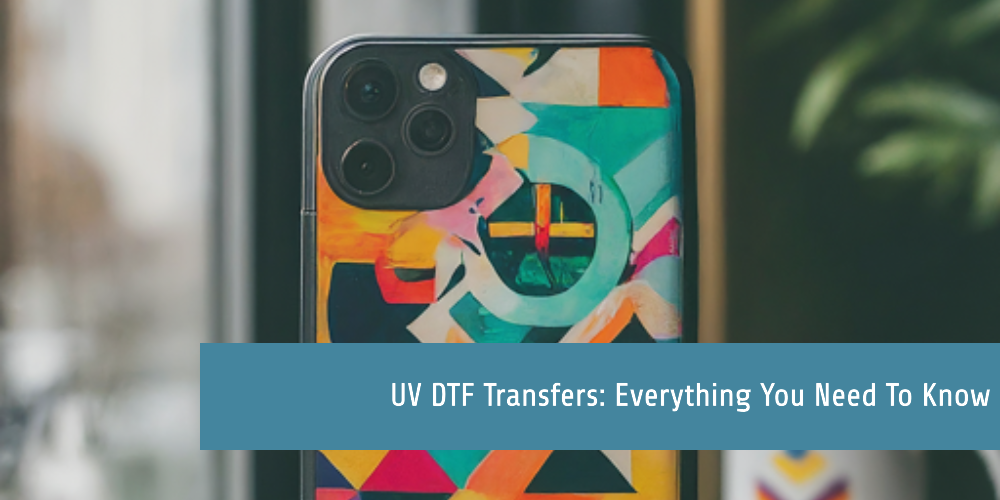What is a UV DTF Transfers?
UV DTF refers to a printing method that uses UV-cured inks applied directly onto a thin film or substrate which is then transferred onto a surface. The 'DTF' in UV DTF stands for 'Direct to Film'. This process allows for high-resolution prints with vibrant colors and intricate details. UV DTF transfers can be applied to a variety of hard surfaces, including glass, plastic, wood, and metal, but not fabric.
Some retailers offer custom UV DTF transfers with different sizes, shapes, and finishes. There are also pre-designed UV DTF transfers with themes such as Christmas, Halloween, and retro groovy designs.
What are the Benefits of the UV DTF Transfers?
Here are the benefits of UV DTF transfers:
High-quality prints: UV DTF printing produces high-resolution prints with vibrant colors, sharpness, and detail. The prints capture intricate designs and complex patterns with precision.
Durability: UV DTF transfers are known for their durability. The UV-cured inks are scratch-, fade- and water-resistant, ensuring the prints can withstand daily wear and tear.
Versatility: UV DTF can print on a wide range of materials including metals, glass, wood, acrylic, leather, and certain plastics.
Efficiency: The automated UV DTF process is fast and efficient, with quick turnaround times. The prints are cured instantly by UV light, eliminating the need for drying time.
Cost-effectiveness: UV DTF is relatively low cost per print compared to screen printing, especially for short print runs. The process also eliminates the need for expensive screens, plates or dies.
Creative freedom: The ability to print detailed, full-color photographic images opens many creative possibilities.
Easy application: UV DTF transfers are straightforward to apply and require minimal equipment.
Environmental benefits: UV DTF printing uses eco-friendly inks with low levels of volatile organic compounds (VOCs), making them safe for the environment and users. Additionally, the prints are unlikely to end up as waste due to their high quality.
What Materials Can UV DTF Be Applied to?
UV DTF printing can be applied to a wide range of materials including wood, plastic, ceramic, leather, paper, glass, aluminium, stainless steel, brass, and more. This versatility is due to the printing process, which involves applying the design to a film before transferring it to the desired surface.
The ability to print on curved and uneven surfaces means that UV DTF is suitable for decorating items such as cups, mugs, tumblers, and plates. However, one source notes that UV DTF is not suitable for textiles or fabric, as the ink used does not bond well with fabric fibers and may peel off over time.
How Long Does It Take for UV DTF to Cure?
The curing time of UV DTF ink is almost instantaneous upon exposure to UV light. This makes the printing process very fast and efficient.
After the UV DTF film has been printed and the design transferred onto the desired surface, some sources suggest using a hot air dryer or UV lamp to further cure the ink. The time taken for this step is not specified, but it seems like a precautionary measure to ensure the ink fully cures. The curing process may take different lengths of time depending on the type of ink and environmental conditions, so it's best to refer to the manufacturer's recommendations.
Can you Use UV DTF for Shirts?
UV DTF printing is not suitable for printing directly onto fabrics such as T-shirts. The ink used in UV DTF printing does not bond well with fabric fibers and may peel or crack over time. Fabrics are also flexible and prone to stretching, which can cause the print to crack or the stickers to fall off.
If you want to print designs onto shirts, the DTF (Direct to Film/Garment) printing method is more suitable. This involves printing designs onto a film, and then transferring the design onto the fabric using a heat press. DTF printing can also be used on other materials such as hats, bags, and shoes.
Is UV DTF Waterproof?
Yes, UV DTF stickers are waterproof, meaning they can be used on surfaces that come into contact with liquids such as glasses, mugs, and cups. The waterproof quality is achieved by combining UV printing with a film overlay, creating a water-resistant design. This makes UV DTF transfers a popular choice for decorating tumblers.

